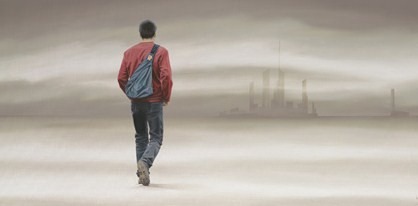Here is a sign that’s perfect for Easter.
What do you read at first glance?

Some people, at first glance, read the sign
as saying “GOD IS NOWHERE.”
Others, however, see something
entirely different:
“GOD IS NOW HERE.”
One single space makes
all the difference!
Depending on where you put that space,
either the sign is a complaint
about God’s absence,
or a bold proclamation
of an astonishing piece of good news!

When you think about it,
that’s how Easter works.
The disciples never really quite got
a 100% handle on it.
Yes, they had those amazing encounters
with the Risen Lord,
but when they stepped
out of that Upper Room,
the world seemed disturbingly unchanged.
The Romans still ruled over them.
People still suffered.
People still fell ill.
People still died.
Worse, aside from the physical evil
of suffering, disease, and death,
there also still remained moral evil:
People still sinned.
They harmed one another
and hurting themselves.
Whatever happened to the Resurrection?
They could have sworn
the world would be transformed,
but the Lord seemed NOWHERE to be found.
Don’t we today know how that feels?
But the message of Easter is precisely
“The Lord is NOW HERE—
appearances to the contrary notwithstanding!”
Just like the sign,
a second look at what seems like
the same tired old, broken world–
a more attentive and deliberate reading–
can reveal the Risen Lord’s presence:
Something has happened.
Something has changed.
And something is afoot.
Either we choose to see it that way–
or we join Team Jesus.

Easter has always entailed choices.
People always had to make a decision
whether to believe or not to believe.
The good news is
that even if our first impulse,
like Thomas’,
is to disbelieve,
if we give it a chance,
if we are open,
just like the sign,
we can revise our reading.
If we are honest with ourselves,
this whole business of the pandemic
raises a nagging question:
“Where is the Lord in all this?”
It’s the classic Easter question.
And we have to choose our answer:
Do we say “NOWHERE“–
or “NOW HERE“?
We need to make our choice.
We can choose to believe
that nothing–or no one–is here.
Or we can choose Easter.